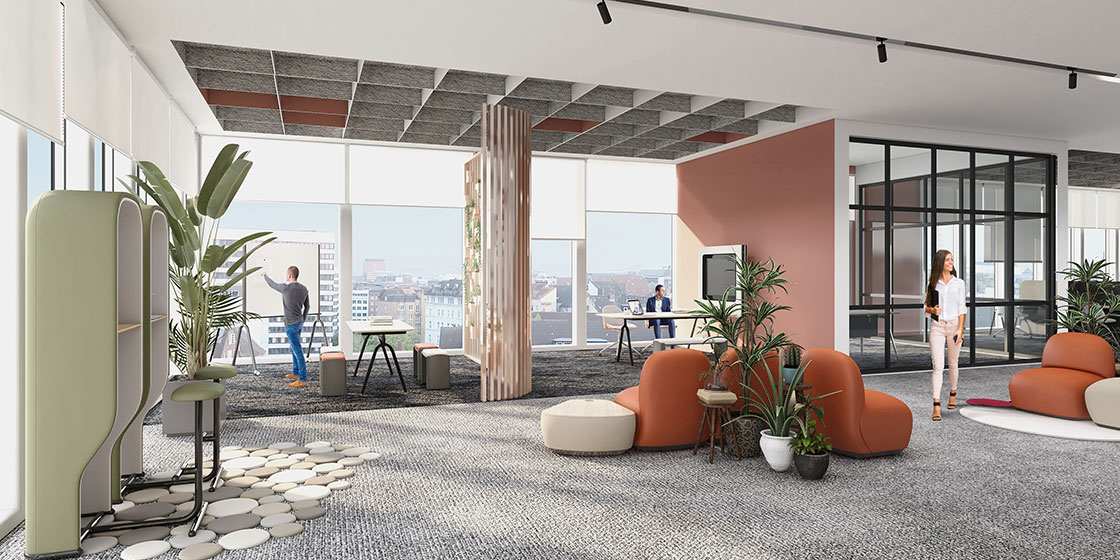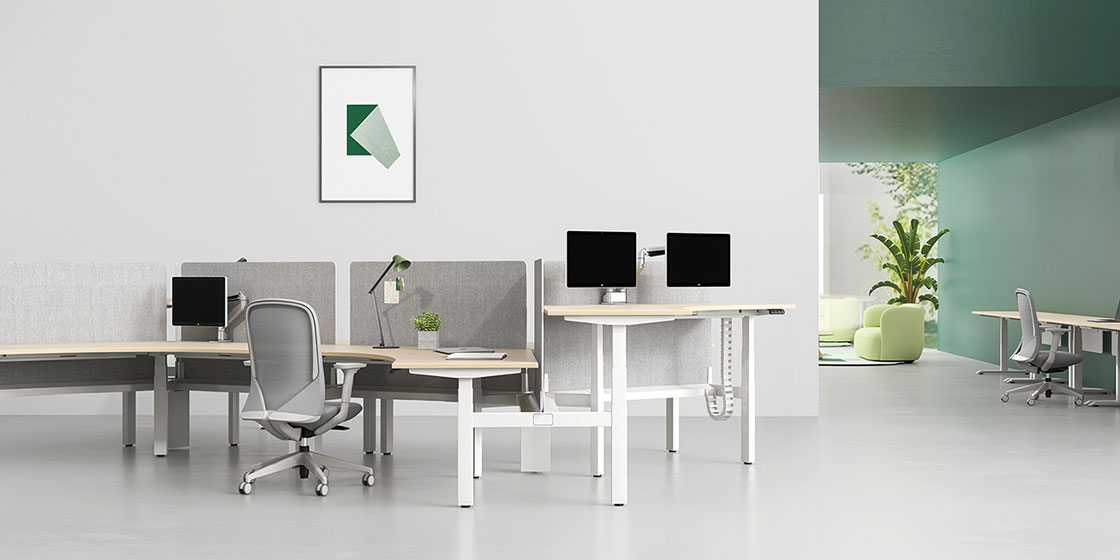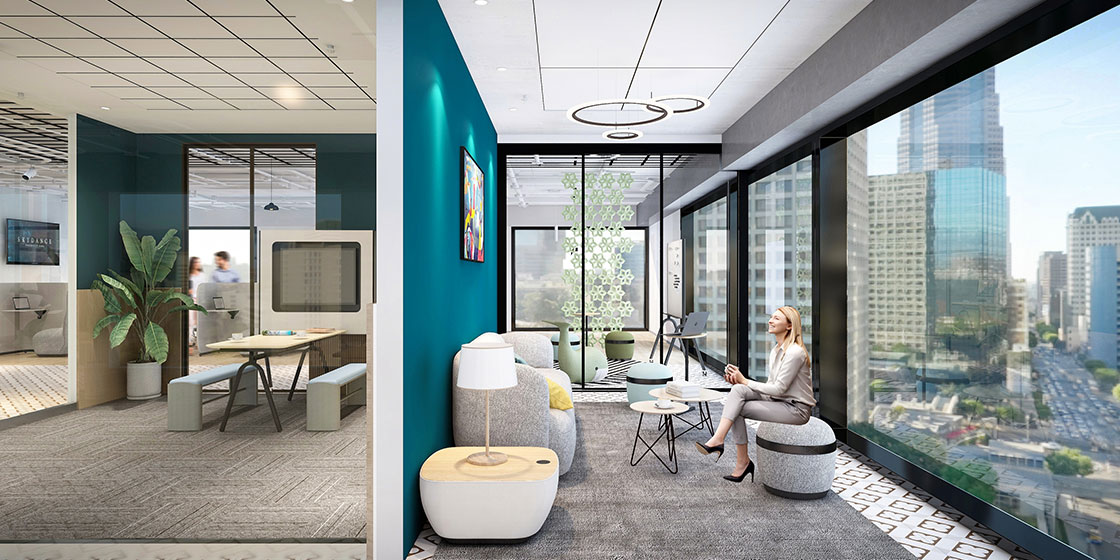
What do collaboration spaces, touchdown spaces, activity areas, staircases, outdoor spaces, and greenery have in common? They are all design elements that are a part of an active office…designed to focus on the wellbeing of the employees.
What is active office design?
Active design is an architectural principle and a workplace strategy of creating spaces that encourage a healthier and more active lifestyle. It is meant to encourage physical activity in the workplace and more companies are now embracing this healthy initiative. Interior designers and architects are getting interested in wellness in workplaces and it makes workers happier, healthier, and feel valued.

Why are companies investing in active design?
Office spaces can have a tremendous impact on health. Workers often many hours sitting at a computer without any movement. Diseases like diabetes and obesity result from a lack of movement. This leads to reduced quality of life, absenteeism, decreased productivity, and rising healthcare costs.
Research also shows that Millennials and Zoomers are interested in ‘caring’ organizations that give importance to workplace wellness. So for employers looking to attract and retain talent, active workplace environments that support healthy, happy lifestyles are more than valuable.
The active design addresses these issues by incorporating environmental changes, policies, and programs into the workplace that encourages people to lead a better life.
6 Active design ideas
If your company is looking for ways to support health and wellbeing in the workplace, here are 5 design ideas and practices that address both personal wellness and work-life balance through active design:
Adjustable workstations
Sit-stand desks can help reduce prolonged sitting, which can cause back discomfort, body disorders, and obesity. Workers of all ages are realizing that working does not necessarily require sitting. Switching between sitting to standing modes allows for short breaks of physical activity as well. An employee that can sit or stand and work, is healthier, sharper, and more productive.

Open staircases
Grand open staircases are a great design feature and look appealing in an office. Strategically placed staircases can encourage people to take the stairs instead of the elevator. open and easily accessible staircases can be fitted in adjacent floors to be used for movement and burn calories. It can also encourage collaboration between people on adjacent floors.
Exercise Spaces
Facilities like Exercise rooms for sports and yoga, gyms, multipurpose recreational rooms, cycling, swimming pools are available in big office campuses. These are great avenues to stay active and reduce stress.
Encourage walking
The idea is to make people get up and walk to different spaces. A centrally located Shared space such as team collaboration lounges, canteen, and even meeting rooms should be placed within a pleasant walking distance of workstation areas so that people keep moving as part of their daily routine. Creating a movement-friendly work environment will result in more engagement among people.
Variety of work settings and spaces
Activity-based working (ABW) maximizes space utilization, enhances the employee experience, and fosters employee wellness. By locating workplace areas based on activities, companies can ensure that employees walk from place to place many times throughout the day. With a variety of workspaces, employees are able to choose the workspace that best suits their mood and current task. Active design spaces can be hubs for collaboration and social activity.

Daylight and Outdoor Spaces
Natural sunlight is critical to creating a better workflow, output, and energy. Access to natural light and views of the outdoors are preferred by people in the workplace environment. A café with large windows or al-fresco terraces is surely going to be popular among people and will make them move from their workspaces and connect with others.
To know more about workplace wellbeing, check out our blogs: Click here